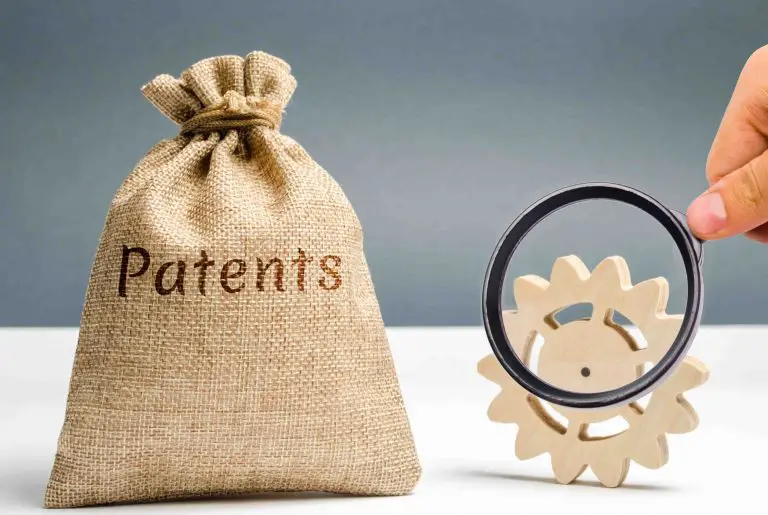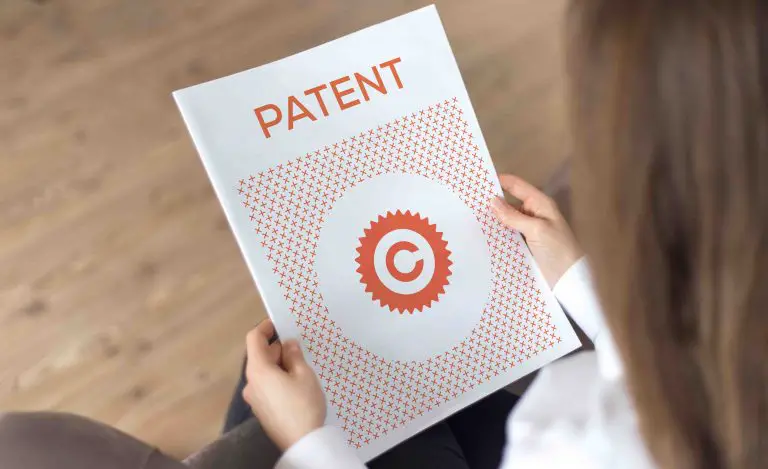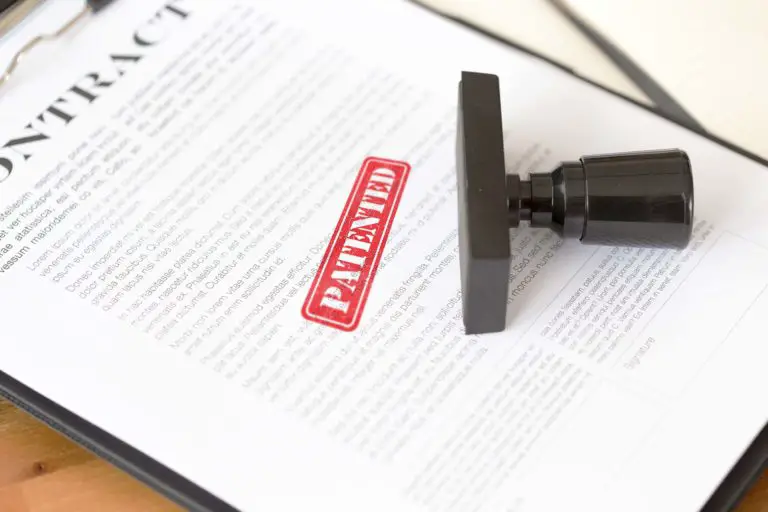What is the Best Intellectual Property Protection?
The USPTO offers several different forms of intellectual property (IP) protection. So, as an owner of an intellectual property, which form of intellectual property protection should you choose? We will discuss the best intellectual property protection below.
What is the Best Intellectual Property Protection?
The best intellectual property protection is the one that’s suitable for your specific property. The patent office offers IP owners the ability to protect their IP with the following forms of protection:
- Patents
- Trademarks
- Copyrights
- Trade Secrets
The best intellectual property protection is the one that’s suitable for your specific type of property, here is a chart that will help you determine the appropriate type of protection for your property.
| IP Protection | Protects | Length of Protection | Registration Required? | Infringement | Cost of Protection |
|---|---|---|---|---|---|
| Utility Patent | Utility patents protect how an invention works (The function of an invention) | 20 years from the filing date of a patent application | Yes | Occurs when someone uses, makes, sells, or imports to the U.S the patented invention | $$$$$ |
| Design Patent | Design patents protect how an invention looks (The appearance or ornamental aspects of an invention) | 15 years from the date the patent office grants a design patent application | Yes | Occurs when someone uses, makes, sells, or imports to the U.S the patented invention | $$$ |
| Trademark | Trademarks protect brand names, symbols, and logos that are used to identify the source of goods or services | Trademark protection is ongoing so long as the trademark is used as a trademark | No, but registration is very important | Anyone who uses the trademark to mislead the public as to the source of goods or services | $$ |
| Copyright | Copyrights protect works of art, such as songs, movies, books, and software code | Copyrights are valid throughout the life of the author, as well as 70 years after the death of the author | No, but registration offers additional rights and protection | Anyone who copies the artistic work without the permission of the author. This is subject to some exceptions | $ |
| Trade Secret | Protects information that a business has that is unknown to the public | Indefinite so long as the trade secret is kept as a secret | No | Misappropriation of trade secrets | N/A |
[table id=8 /]
After reading this table, you should be able to choose the appropriate protection for your intellectual property. We covered what type of IP is protects by utility patents, design patents, trademarks, copyright, and trade secrets.
Note: In some circumstances, you may choose more than one type of intellectual property protection to protect the same invention, design, artwork, or brand.
We will discuss each type of IP protection in more detail below.
Utility Patent IP Protection
Utility patents can be used to protect how your invention works or the functional aspects of your invention. You can obtain a utility patent by preparing and filing a utility patent application with the USPTO.
If you want to protect your invention with a utility patent, make sure that you file a utility patent application within 12 months of publicly disclosing your invention or offering it for sale.
When filing a utility patent application, inventors have two options. The first option is to file a provisional application or to file a (regular) nonprovisional utility patent application.
A provisional application does not turn into a patent but it reserves an early filing date for an invention. This is very important in the US because the US has a first to file rule, which grants a patent to the first inventor who files a patent application. To obtain a patent after filing a provisional application, an applicant must file a regular application within 12 months of filing the provisional application.
If you are successful in obtaining a utility patent, your invention will be protected for 20 years from the date you filed a nonprovisional patent application with the patent office.
Once the patent office grants a utility patent application, the patent holder will be able to restrict others from using, making, selling, and importing the patented invention to the United States.
That said, obtaining a utility patent is quite expensive due to the amount of work that goes into preparing and filing a patent application with the patent office. Patenting even a simple invention could cost more than $8,000.
Design Patent IP Protection
Design patents can be used to protect how your invention looks. If your product or invention has a unique appearance, you can protect its appearance by preparing and filing a design patent application with the USPTO.
Like with utility patents, a design patent must be filed within 12 months of publicly disclosing your design or offering an article that bears the design that you want to patent.
If you do not file a design patent application within 12 months of publicly disclosing or selling your design, you will be prohibited from patenting it.
If you are successful in patenting your design, you will be able to stop others from using, making, selling, and importing an article to the United States that bears the design that you’ve patented.
If someone does use, make, or sell your patented design, you will be able to bring a lawsuit against them for patent infringement in Federal District Court.
If your lawsuit is successful, you may obtain an injunction against them prohibiting them from infringing upon your intellectual property. In some circumstances, you may also be able to recover lost profits that you incurred as a result of the infringement upon your design patent.
Design patents are less expensive to obtain from utility patents because they require less work by the attorney preparing your design patent application. If you want to protect your design with a design patent, you should expect to pay $2,500 to $3,500 for an attorney to prepare your design patent application.
Trademark IP Protection
If you have a brand name, logo, or symbol that you use on products or services that you offer to the public, you can protect them by registering them as a trademark with the USPTO.
The trademark office has allowed people to register sounds, colors, and designs if customers use them to identify them or their businesses are the source of goods or services.
That said, the most commonly registered trademarks with the patent office are word marks, logos, and slogans that businesses use to identify themselves as the source of goods or services.
Trademark registration is not mandatory, however, you;re only protected in the State in which you’re using the trademark.
Registering your mark establishes your ownership over the registered mark and gives other notice that you’re using the trademark.
At Patent Rebel, we believe the most important benefit of registering your trademark with the patent office is that it offers nationwide protection for your trademark. This means that no one can use the same trademark on the goods or services for which your trademark is registered throughout the United States.
If a bad actor uses your trademark on his goods or services and such use confuses the public, you can bring a lawsuit against the bad actor for trademark infringement in Federal District Court.
If you’re successful in your lawsuit, you may be able to obtain an injunction prohibiting them from using your trademark, as well as recovering any damages you sustained by the bad actor’s use of your trademark.
Registering your trademark with the USPTO is fairly inexpensive and could be done for less than $300 if you’re willing to prepare the trademark application and file it on your own. However, if you want the help of a service, you should expect to pay an additional $200 to $500 for online services to assist you with preparing your trademark application.
Copyright IP Protection
Copyrights protect original works of art, such as photos, songs, movies, novels, articles such as the one you’re reading, poetry, and even computer software.
If you have an artistic work such as the ones we mentioned above, you should know that they’re protected automatically under U.S copyright law the same moment you create the work.
Although registering your work is is not mandatory for protection, registering your work as a copyright with the U.S Copyright Office does have its benefits.
The main benefit of registering your work as a copyright with the copyright office is that you’ll be able to bring a lawsuit for copyright infringement in Federal District Court against any party that infringes upon your registered work.
The only requirement for copyright protection is that you have a work of art that’s fixed in a tangible medium of expression. This requirement is easily satisfied. Writing down a song, drawing on a sheet of paper, or saving information to a medium, such as a flash drive or hard drive satisfies this requirement.
So, by now, you may be wondering how long does copyright protection last?
Copyrights for artistic works created on or after January 1st, 1978 last for the life of the author plus an additional 70 years after his death. So, for most people, this protection is enough.
Registering your work as a copyright with the U.S Copyright Office is very easy and inexpensive, costing $35 to register a single piece of artwork. So, if you have a song, book, or piece of art that you want to protect, copyright registration is easily obtainable.
Trade Secret Intellectual Property Protection
According to the USPTO, a trade secret consists of “any information that can include a formula, pattern, compilations, program, device, method, technique, or process” that’s used in business and gives the holder of such information an economic advantage over competitors who don’t know the information.
Trade secrets are not registered with any entities, such as the USPTO or the Copyright Office, instead, it is the responsibility of the trade secret owner to take reasonable precautions to protect his trade secret.
Since trade secrets are not registered with anyone, they last for as long as they remain a secret. So, in reality, a trade secret could last forever, so long as the holder does not disclose it.
If you have a trade secret and you need to disclose it to perform your business, you should have the party with whom you’re sharing your trade secret sign a confidentiality agreement.
Having them sign a confidentiality agreement could prove to be helpful if the party with whom you’re sharing your trade secret misappropriates because it shows that you’ve taken reasonable steps to protect the trade secret and the information should qualify for trade secret protection under the law.
Some people choose trade secret protection over patent protection for a few reasons. The first reason is that trade secret protection could last forever, whereas a patent expires after 15 to 20 years, depending on the type of patent you have.
The second reason is that patenting an invention requires disclosing everything about your invention, product, or formula, including disclosing how it works, how to make it, and how it’s used.
Once the patent expires, the public will be able to replicate the once patented invention and sell their own version of it. By opting not to patent your invention, you could profit from it indefinitely so long as no one reverse engineers it or learns how to copy it.
So, if you have an invention and you’re wondering about how to approach protecting it, you now know that you can ask your attorney about the difference between patenting your invention or protecting it as a trade secret.
Frequently Asked Questions?
1) Should you protect your intellectual property?
Yes, if you have intellectual property that is valuable to you or your business, you should protect it. The type of protection you need depends on the type of IP that you want to protect. We included a great chart that should help you choose the property IP protection for your property. If you still don’t know which protection you need, you should contact an attorney and ask them to assist you with choosing the correct protection.
2) What are the 4 main types of intellectual property protection?
As we have mentioned throughout this article, the four main types of intellectual property protection are (1) patents, (2) trademarks, (3) copyrights, and (4) trade secrets. We have included a table that should help you determine which type of IP protection is suitable for your specific case. If you have any additional questions, you should contact your attorney to assist you with choosing the proper IP protection.
3) How do you protect your intellectual property?
How you protect your IP depends on the type of property that you have. If you have an invention or a design, then patenting is the way to protect it. If you have a brand that customers use to identify you as the source of goods or services, then trademark registration may be the correct option. If you have artistic work, such as a song, movie, photo, or book, the correct protection is copyright law. If you have a secret that improves your business, protecting it as a trade secret may be the proper protection. So, the answer depends on the type of property you want to protect.
4) How long does intellectual property last?
- Utility patents last for 20 years from the filing date of your patent application
- Design patents last for 15 years from the date the patent office grants your design patent application
- Trademarks may last forever so long as you continue to use them as a trademark
- Copyrights last throughout the life of the author, as well as 70 years after the death of the author
- Trade secrets can last forever, so long as the holder of the secrets continues to protect them as such
5) What is intellectual property (IP) law?
IP law is the section of law that protects intangible and tangible property, such as inventions, artistic works, and information used to give businesses an advantage over their competitors. IP law is becoming increasingly important for inventors who want to profit from their ideas and inventions.
Best Intellectual Property (IP) Protection
At this point, you should know the different forms of intellectual property protection that are offered under US law. Different forms of intellectual goods are protected by different mechanisms. Choosing the correct form of protection is vital to protecting your intellectual property. If you have any general questions or comments, please feel free to leave them in the comments section below.








